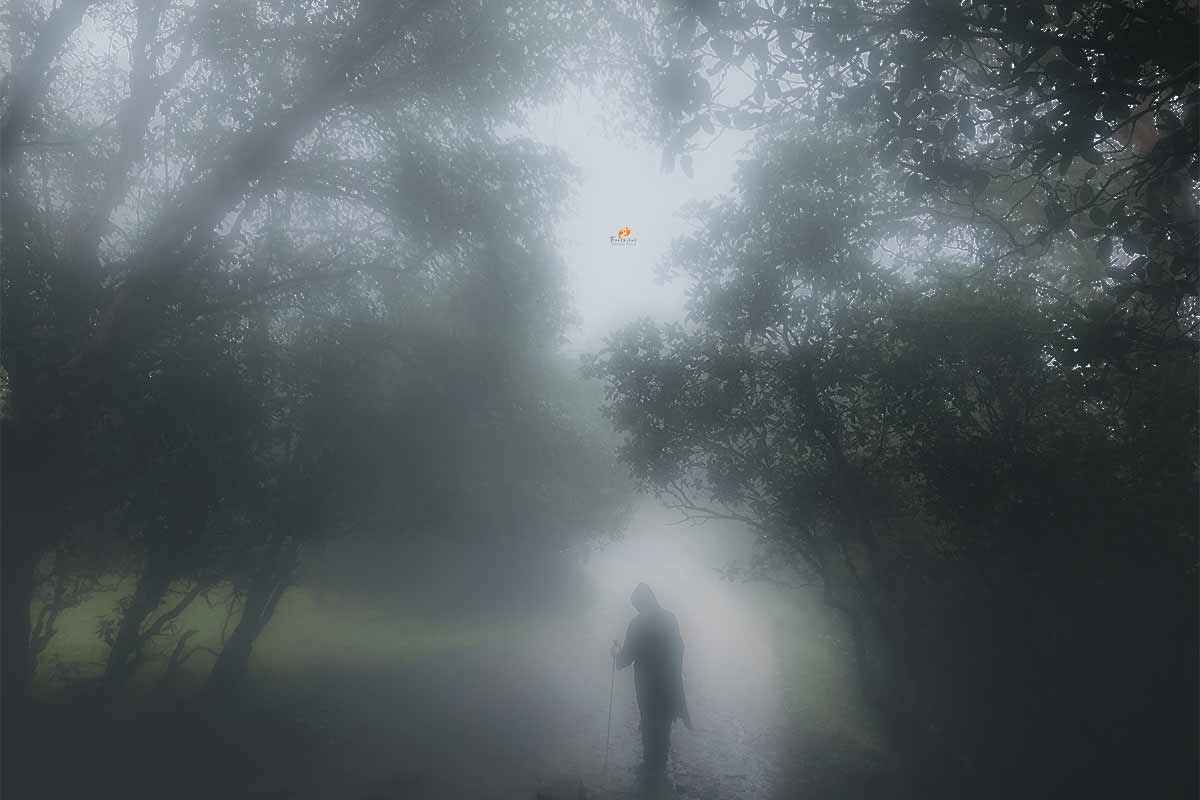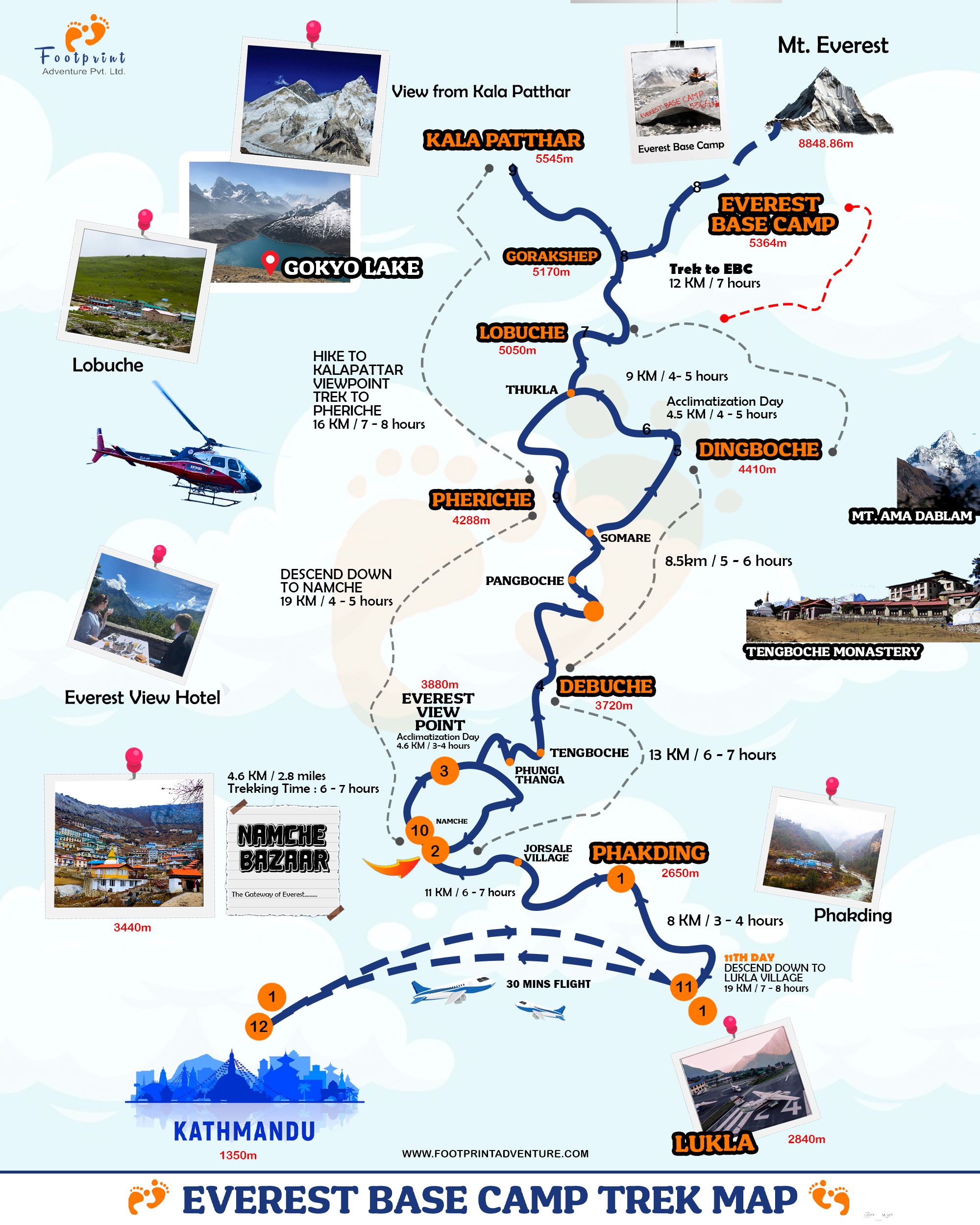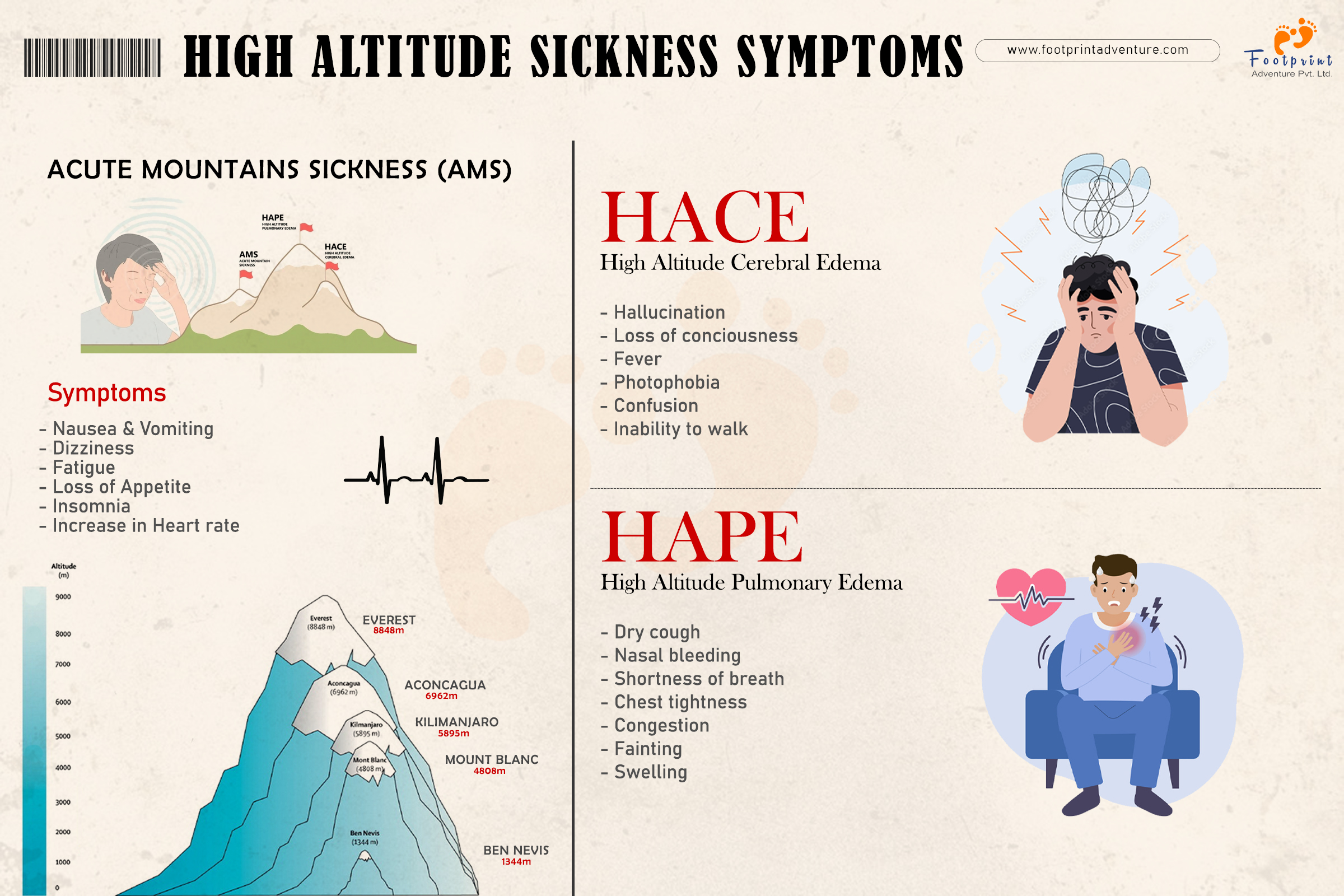Trekkers going missing in Nepal is a long-standing issue that worries the authorities, families, and the trekking community throughout the year. While most trekkers complete their journeys safely, a few still disappear every year. These disappearances often result from natural hazards, inadequate preparation, and navigating the trails alone without guides. Nepal’s trails, though stunning, can be remote and challenging. Rapid weather changes and tough terrain can quickly turn a simple hike into danger.

Trekkers from various countries, including Sweden, Russia, Taiwan, Austria, Pakistan, India, Israel, and the Netherlands, have gone missing in Nepal. Most of these disappearances occur in popular trekking regions like Annapurna, Everest, Langtang, and Manaslu. High-risk areas include Mardi Himal, Annapurna Base Camp, Khopra, Namche Bazar, Lobuche, and Soti Khola. These stunning locations often present challenges with their rugged terrain, unpredictable weather, and remote trails, increasing the risk of trekkers going missing.
In one such case, two trekkers from Taiwan went for a trek along the Tamang Heritage Trail in the Langtang region of Nepal without hiring a local guide in February 2017. The trek started on February 22nd but soon they faced problems such as lost luggage as well as personal conflicts. To add to their troubles was bad weather like snow. Following their disappearance, Nepali authorities launched a search operation with support from guides and helicopters.
Locals in Dhading reported a red tent in a cavernous area forty-seven days later and alerted the rescue teams. Unfortunately, one of the trekkers had died three days before the rescue, but the other was rescued alive. Without trauma injuries, the survivor had severe dehydration, malnutrition, and infestation with lice and nits, having lost more than 30 kg. They fell near a waterfall while trying to make their way down to Somdang Valley via Pangsang Pass and survived on limited food for two weeks before relying solely on water and salt.
This incident highlights the risks of trekking in Nepal’s unpredictable mountain environment. The weather can change rapidly, bringing sudden snowstorms, avalanches, or landslides that pose serious threats. Even experienced trekkers can become disoriented or trapped in such harsh conditions. Nepal trekking dangers are further complicated by navigation errors, as some routes, particularly in less-traveled areas, lack clear signs or well-marked paths. Trekkers who wander from main trails, whether by accident or curiosity, can easily get lost in dense forests or remote valleys, making rescue operations exceptionally challenging.
Traveling alone without a guide can lead to communication challenges, which is also one reason trekkers go missing. Many remote trekking areas in Nepal don’t have proper signage and see few other trekkers. In these places, language barriers often prevent trekkers from asking locals for directions. Without communication devices like satellite phones or radios, it’s hard to call for help. Solo trekkers who face sudden injuries or health problems, like altitude sickness, can end up completely isolated, with no one around to help or notify authorities in time.
Common reasons why trekkers go missing in Nepal
Trekking in Nepal offers an incredible journey filled with unforgettable memories. However, to fully enjoy the experience and stay safe, it’s crucial to understand the common reasons why trekkers go missing in Nepal, whether traveling alone or with a guide. Even minor mistakes or oversights can lead to dangerous situations. Here are some key factors contributing to trekkers going missing in Nepal.
Trekking alone without a guide
Data shows that most travelers who went missing on Nepal's trails were trekking alone without a guide. The rugged terrain and unpredictable weather make it hard to navigate without local help. A guide provides essential support by navigating the trails, handling emergencies, and sharing local knowledge. Without a guide, trekkers are more susceptible to getting lost, which can lead to dangerous situations.

Moreover, solo trekking in Nepal has been banned from April 1st, 2023, by the Nepal Tourism Board for safety reasons. The government requires trekkers to be accompanied by a guide or part of a group to prevent mishaps and ensure timely assistance in case of emergencies. This regulation is in place to enhance the safety of trekkers and reduce the number of people going missing in remote areas.
Weather Conditions
Unpredictable weather is one of the major risks for trekkers in Nepal, often leading to trekkers going missing. In the mountains, the weather might change suddenly and make a fine day hazardous with heavy rain, snowstorms, or thick fog. Such weather conditions make the trails slippery, hard to follow, or even blocked by landslides. Poor visibility further enhances the possibility of losing the trail or falling in hazardous areas. Bad weather may make the trekkers victims of storms and freezing temperatures, and they are bound to stop their movements or try to take shelter in remote places hence making the rescue difficult.

Another reason why tourists disappear is because they travel during the off-season, which in Nepal falls in two parts of the year: the monsoon season, extending from June to August, and winter, extending from December to February. These months are unfavorable for trekking due to unpredictable weather, increased river flow, a high risk of landslides, and foggy, slippery trails. The term "off-season" exists for a reason, and it's important to avoid traveling during these times to be safe.
For instance, in a recent case, two Spanish tourists went missing while trekking from Tikhedhunga to Ghorepani via Ulleri in the Annapurna region. Raising suspicions that they may have been swept away by the river when unattended bags and hiking sticks were found near the Bhurungdi River Bridge. This unfortunate incident adds to the growing list of trekkers lost in Nepal. Authorities, along with locals, police, and representatives, are continuing the search. It is believed the tourists were traveling during the off-season, and the heavy river flow might have played a role in their disappearance.
Navigation issues
Navigation problems are one of the main reasons why trekkers lost while hiking in Nepal. This is especially true on roads that are less popular or poorly marked. This is a common trekking risk in Nepal because many roads lead through remote areas with few road signs. This makes it easy for hikers to get lost. Sometimes there is fog and bad weather or unfamiliarity with the terrain can make the route more complicated.

Hikers who rely on maps or GPS may still need help if these tools don't work due to battery issues or incorrect maps. If you don't have a guide or detailed knowledge of the area it is easy to get lost. In some cases, trekkers may try to find side roads or shortcuts. This might take them from the main road to an unknown area. When a hiker gets lost they will travel far into remote areas. This makes it more difficult for rescue teams to find them.
Equipment Failure
Equipment failure is another risk leading to trekkers missing in Nepal. Trekkers rely heavily on their gear such as tents, backpacks, shoes, and GPS devices for protection and navigation. If essential gear breaks, malfunctions, or is of poor quality, it can create serious problems in the challenging environments of the Himalayas.
For instance, a broken tent or sleeping bag in cold weather can leave trekkers exposed to the elements, increasing the risk of hypothermia. Faulty GPS devices or dead batteries can lead to navigation issues, causing trekkers to stray from the path and become lost. Poor-quality shoes or backpacks can result in injury or slow down progress, putting trekkers in remote areas for longer than planned.
Altitude sickness
Acute Mountain Sickness (AMS) is a common risk for trekkers in Nepal, especially when ascending to high altitudes too quickly. Things to know before trekking in Nepal include the fact that Nepal’s trekking routes often lead to elevations where the air gets thinner, and the body struggles to get enough oxygen. Symptoms of AMS include headaches, dizziness, nausea, shortness of breath, and fatigue. If not treated, it can worsen and lead to life-threatening conditions like High Altitude Pulmonary Edema (HAPE) or High Altitude Cerebral Edema (HACE).

One of the major serious factors contributing to why trekkers go missing in Nepal is AMS. When trekkers start suffering from AMS, they may feel disoriented, confused, or too weak to carry on their trek. In some cases, they might take the wrong steps away from normal pathways, get lost, or collapse in some remote areas where help hardly reaches. Furthermore, the symptoms and condition rapidly deteriorate if one continues trekking, despite the symptoms appearing, thereby increasing the chance of accidents.
Proper acclimatization, recognition of the early signs of AMS, and immediate descent at the first appearance of symptoms are the keys to safety in Nepal's high country.
Injury and accidents
Injuries and accidents are common risks while trekking in Nepal, and they can be a major reason why trekkers go missing. The trails are often steep, rocky, and uneven, which makes it easy for someone to trip, fall, or twist an ankle. Even a small injury can make it difficult for trekkers to continue, and if they are in a remote area, getting help quickly becomes a challenge.
In some cases, trekkers might fall off the trail or down steep slopes, making them hard to find. Others may try to take shortcuts or stray off the main path, which can lead to getting lost. Without proper communication or guidance, injured trekkers may become disoriented, worsening their situation.
Tips for safe trekking experience in Nepal
Travel with a local trekking agency
Booking a trip with a local trekking agency is very important to ensure safety while trekking in Nepal. The local agencies are well aware of the geography, climatic conditions, and other risks associated with various routes. Their expertise helps in avoiding trekking risks in Nepal by ensuring that the organization of your trek includes appropriate safety precautions against potential risks you may face on your own.

The local trekking agencies are well familiar with the trails and what they offer a tourist and thus can guide them accordingly through their journey. Additionally, traveling with a local agency gives you a deeper insight into Nepalese culture and traditions, enriching your overall experience.
Trek with a professional trekking guide
Trekking with a professional guide is one of the best ways to ensure a safe trekking experience in Nepal. Professional guides are experienced and well-trained to handle various situations that may arise on the trails, such as sudden weather changes or difficult terrain. They know the routes well and can help you navigate safely while avoiding potential risks.

In addition to safety, a guide can enhance your experience by sharing insights about the local culture, traditions, and environment, making your trek more enjoyable and informative. With their support, you can focus on the adventure while knowing you're in capable hands.
Stick to Designated Trails
The safe trekking in Nepal can be ensured only by following the designated trekking trails. These marked trails are made to take the trekkers safely through the mountain, avoiding hazardous areas such as steep drops and unstable ground. Walking outside the trail may lead to losing one's way and coming across unexpected dangers.

Hiking within specific trails ensures your safety as well as protects the natural environment and local wildlife. Sticking to the right path means you are contributing to responsible trekking while having a safer and more enjoyable adventure.
Communicate and inform others about your itinerary
Planning and sharing your itinerary before hiking is crucial for a safe travel experience. It helps to keep others informed about your plans. Make sure to let your friends, family, or a local trekking agency know your route, start and end times, and any other relevant details. If you anticipate a delay, having someone aware of your plans can help them act quickly if needed. Regular updates during your trek are also beneficial. Keeping track of your progress and reporting it can improve safety and efficiency.
Carry a reliable GPS and maps
A reliable GPS and map are essential for trekking in Nepal. While some trails have signs, bad weather or unfamiliar geography can make navigation difficult. It is always a good idea to bring a GPS and map, as many trails in Nepal aren't well-marked. These tools will help you stay on track or find your way if you get lost.
Even in very remote areas with weak signals, offline maps, and GPS can guide you. Having this equipment ensures you are prepared for unexpected changes in direction.
Emergency and Helpful contacts in Nepal
Here we have listed some trekking emergency numbers that you might require while traveling in Nepal.
National Emergency Telephone Numbers
- Police (Emergency): 100
- Fire: 101
- Emergency Police: +977-1-4228435
- Crime Information: +977-1-4412748
- Tourist Police (Bhrikutimandap): +977-1-4226359, +977-1-4226403
- Missing Child: 104
- Traffic Police: 103
Tourist Police
- Bhrikutimandap: +977-1-4247041
- Thamel: 977-1-4700750
- Basantapur: 977-1-4268969, 4269452
- Pokhara: 977-61-521087
- Belhiya: 977-71-520197
- Metro Police Control, Ranipokhari: 100, 120, 130
- Police Headquarters Operation, Naxal: 977-1-4412780,4411549
Ambulance Services
- Bishal Bazaar: +977-1-4244121
- Nepal Chamber: +977-1-4230213, +977-1-4222890
- Paropakar: +977-1-4251614, +977-1-4260869
- Red Cross: +977-1-4228094
- Bhagawan Mahavir Jain Niketan: +977-1-4418619, +977-1-4422280
Hospital Telephone Numbers
- Army Hospital: +977-1-4271940
- Bir Hospital: +977-1-221988
- Patan Hospital (Lagankhel): +977-1-4522278
- Teaching Hospital (Maharajgunj): +977-1-4412707, +977-1-441505, +977-1-4412808
- B&B Hospital (Gwarko): +977-1-435130, +977-1-4533206
- Teku Hospital (Teku): +977-1-4253396
- AWON Kalimati Clinic (Kalimati): +977-1-4271873
- Norvic Hospital: +977-1-4258554
- Teaching Hospital: +977-1-4412505
- Blood Bank: +977-1-4225344
- CIWEC Clinic (Durbar Marg): +977-1-4228531
- Himalayan International Clinic (Chhettrapati): +977-1-4263170
- Nepal International Clinic (Lal Durbar): +977-1-4434642, +977-1-4435357
Other Helpful Contacts
- Himalayan Rescue Association (HRA): +977-1-4440292, +977-1-4440293
- SAR (Search & Rescue) Dogs Nepal: +977-9856025679 , +977-9841198980
- Institute for Altitude Medicine: +1-970-728-6767,+1-970-728-3848
- Department of Immigration, Kalikasthan: 977-1-4433934,4429660
- Nepal Tourism Board, Bhrikutimandap: +977-1-4256909
- Nepal Tourism Board, Pokhara: 977-61-465292,463029
- Tourism Crisis Unit: 977-97510-44088
Rescue and Recovery Efforts by the Government to Find Missing Trekkers in Nepal
Nepal, the Himalayan region of the world-famous for its challenging terrains and diverse landscapes with snow-capped peaks, is also highly prone to hazards. The region is affected by steep slopes, fragile geography, and unpredictable weather, which can pose risks for trekkers. As more tourists come to Nepal for trekking, expeditions, and biking, one or two trekkers go missing every year, highlighting the importance of trekking safety in Nepal.

The Nepali government has started to put in place different laws and regulations so that the number of missing trekkers is decreased. A major step is the no solo trekking rule in certain regions which aims to ensure that all trekkers are with a guide or porter out there, thereby ensuring nothing goes wrong. Yet even this is not enough as the difficult topography and limited communication equipment or technology often make it impossible to locate missing individuals and effectively rescue those in need, from remote mountainous areas.
When trekkers are reported missing, the government deploys search and rescue teams to the relevant area. These teams include trained personnel from the Nepal Army, and Nepal Police, and experienced local guides. Local communities play a crucial role in search and rescue operations, contributing their deep understanding of the terrain, weather conditions, and potential hazards.
Helicopters are commonly used to speed up search operations, especially in remote and hard-to-reach areas, providing aerial surveillance, transporting rescue teams, and evacuating those who are injured or found.
In recent years, the government has upgraded to use drones, satellite imagery, and GPS tracking devices for better search operations. The tools help locate missing people and track rescue progress, improving the chances of finding lost trekkers on time by a vast margin.
Conclusion
Trekking in Nepal is an incredible experience, but it has its risks. Safety should always be the priority for every trekker. By preparing well, taking precautions, and respecting the tough environment, trekkers can greatly lower the chances of running into serious issues. Although unexpected situations can happen, careful planning, local guides, and being aware of dangers can make the journey through Nepal's beautiful landscapes both safe and unforgettable.
FAQs
What are the causes of death among trekkers in Nepal?
The Common causes include altitude sickness, falls, avalanches, and unexpected weather changes.
Why did Nepal ban solo trekking?
Nepal banned solo trekking to improve safety, as trekkers going alone were more vulnerable to getting lost, injured, or facing emergencies without help.
Is it safe to hike alone in Nepal?
Hiking alone in Nepal can be risky due to the challenging terrain, unpredictable weather, and the potential for accidents. It's safer to trek with a guide or group.

.jpg)









